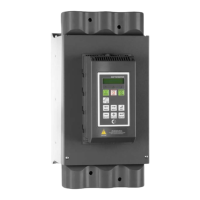Why is my CG emotron TSA showing 'Over temp'?
- MmcmahoncrystalAug 20, 2025
If the CG Controller displays 'Over temp', it indicates the heatsink temperature is too high, possibly due to high ambient temperature, insufficient cooling, excessive current, or blocked fans. Ensure proper cooling of the softstarter cabinet, verify the functionality of the built-in fans (if applicable), check the softstarter and motor ratings, and clean the fans.


